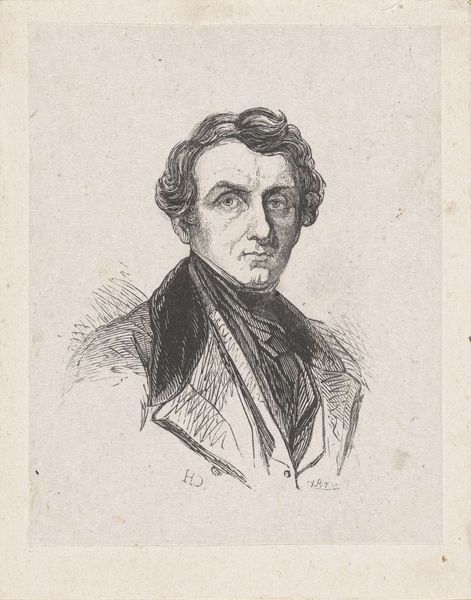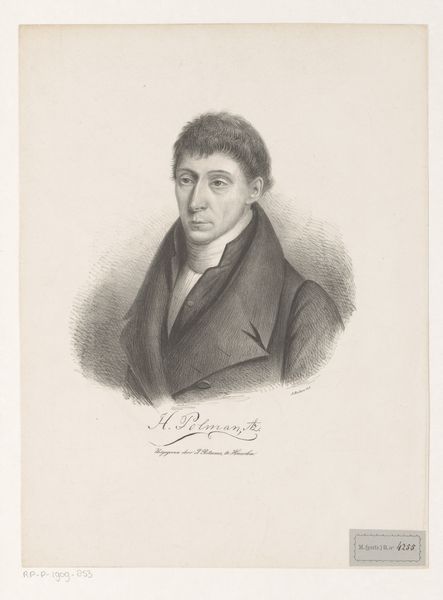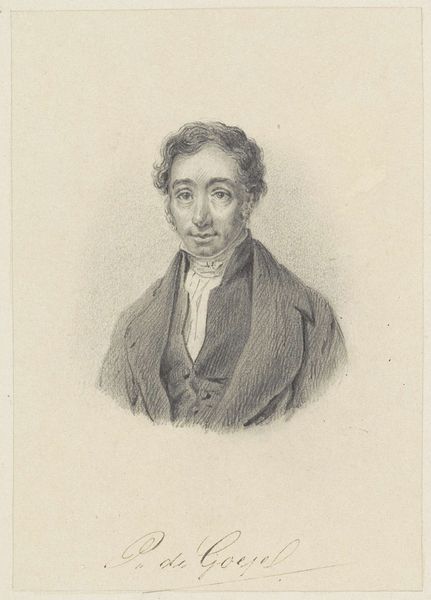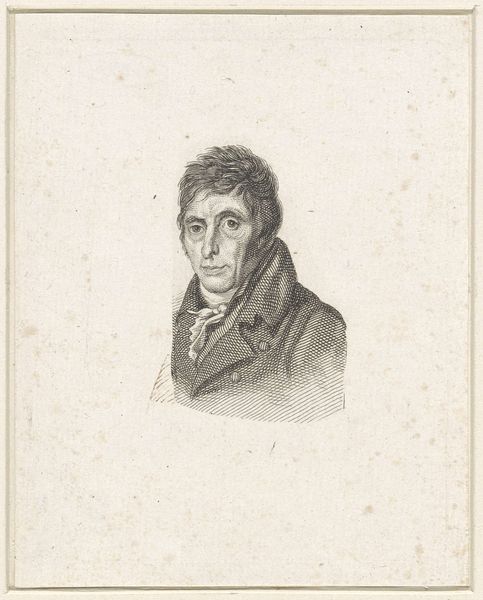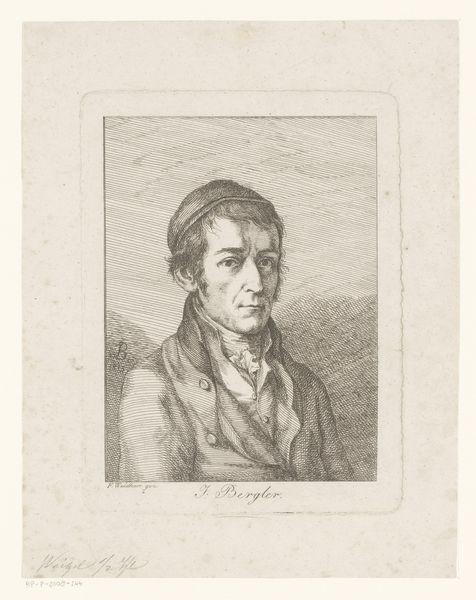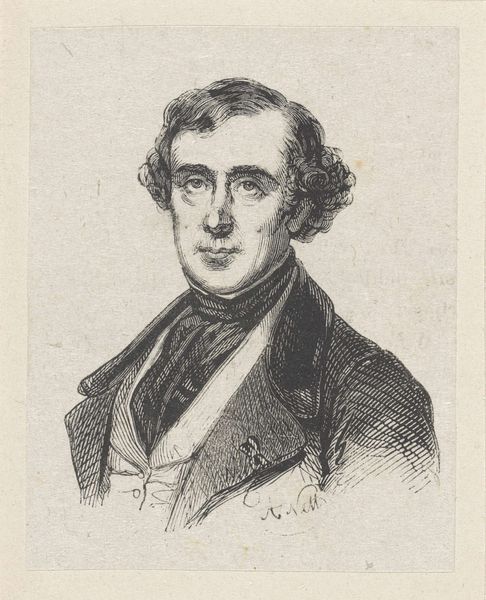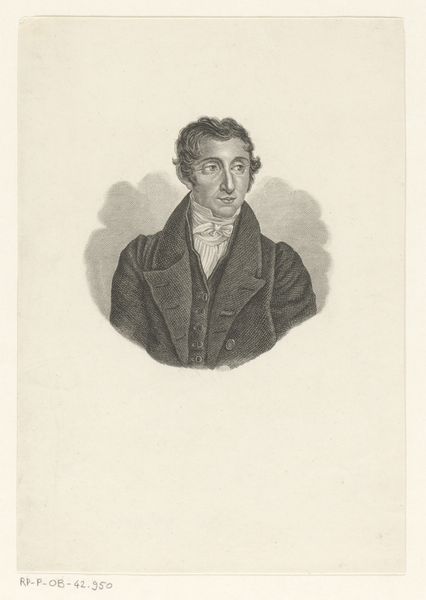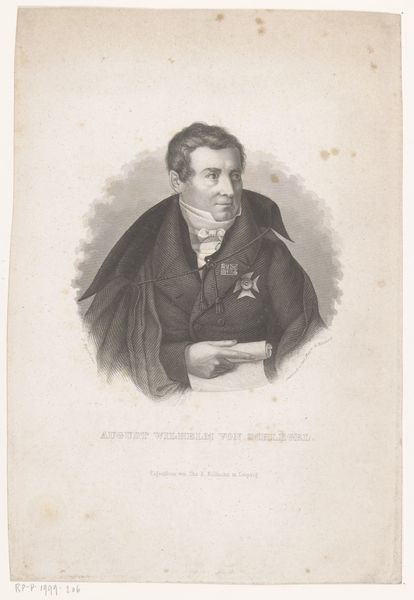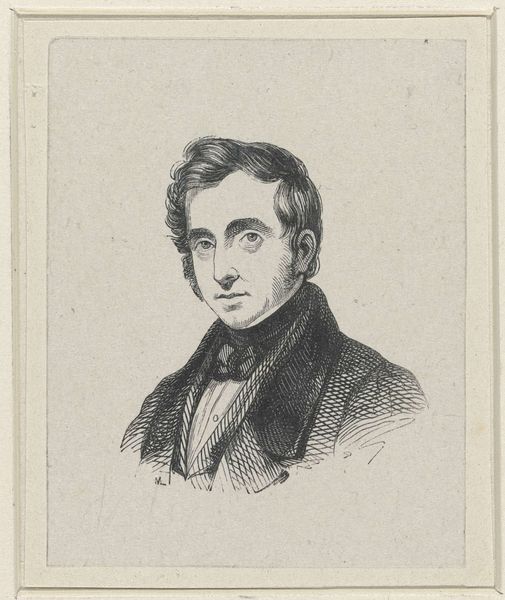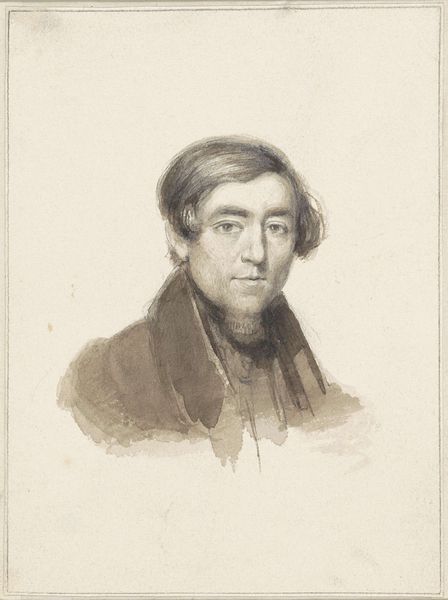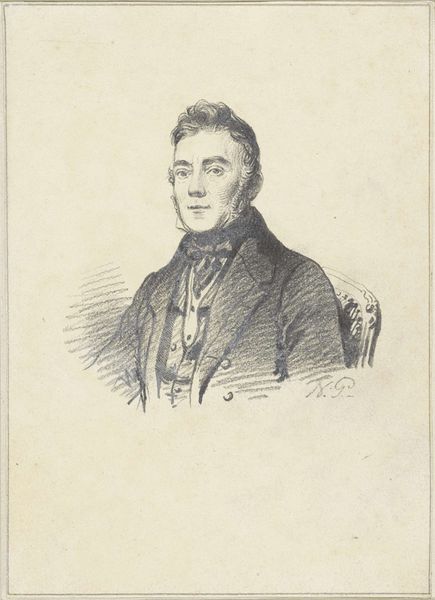
drawing, print, engraving
#
portrait
#
drawing
# print
#
romanticism
#
engraving
Dimensions: height 205 mm, width 130 mm
Copyright: Rijks Museum: Open Domain
Curator: What do you make of this engraving? The "Portret van Cornelis Anne den Tex," created in 1840. I’m particularly struck by its air of Romanticism and technical precision. Editor: Ah, my first impression is that it has the stillness and formality of a sepia-toned photograph, but, you know, pre-photography! There's something undeniably grave about his gaze. The stark monochrome somehow enhances that. Curator: Precisely. This artwork offers more than a mere likeness; Willem van Senus sought to capture the spirit of the subject, a prominent figure of his time. The very controlled lines, that almost delicate cross-hatching…it’s a demonstration of skill. Editor: Yes, the craftsmanship is really on show, isn't it? The artist also took an intimate approach to portraying Den Tex: from the slight dishevelment of his hair, down to his clothing and subtle lighting – the artist's effort is very clear to see! What strikes me the most about this particular medium – engravings – is that you never see strokes or any 'happy accidents,' just the cold hard rendering of a visual phenomenon. The result is both emotionally-void and rich, don't you think? Curator: The very constraint of engraving lent itself well to the Romantic pursuit of idealizing and memorializing the individual. There's a curated dignity, you know? As opposed to the fluidity of say, charcoal. Speaking of this rendering; the choice of material here contributes heavily to the final mood. Editor: An interesting thing, and almost like a playful note – if one dares – is the script towards the bottom. The artist wanted you to make no mistake! This is definitely "C. Den Tex". I find it refreshing to add such a personal touch to the final output. Curator: Well, it's a way of solidifying identity, imprinting it onto the very fabric of the print itself. Editor: Right. It reminds me of why, for many decades, this art style persevered as the premier method of immortalizing political and economic leaders. Seeing his face accompanied by his signature reinforces, rather humorously, the purpose of "art as documentation". I enjoyed contemplating how this medium helped standardize image-making prior to the emergence of cameras. Curator: A standardization that offered great emotive potential.
Comments
No comments
Be the first to comment and join the conversation on the ultimate creative platform.
